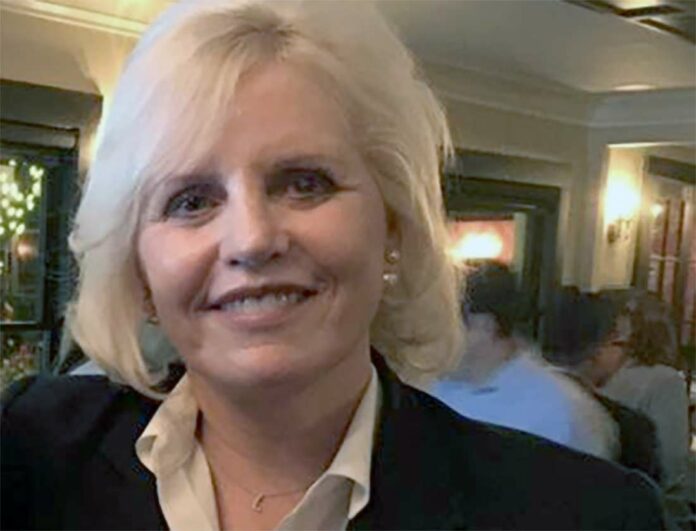As a young journalist, I was once invited to a meeting with Sheriff Bob Winter at a Los Gatos insurance office. At one point, one of the attendees asked the folksy sheriff if there was anything he could do to help. I remember Winter saying he needed to get some envelopes from his car and trotting in his cowboy boots across the parking lot to retrieve them.
The clumsy and undignified spectacle highlighted the paradox of an elected sheriff. On one hand, the political process enabled community ties outside of the insular world of cops and bad players and presumably kept law enforcement accountable to the public. On the flip side, it created a crony system.
Winter established a sheriff’s advisory board that handed out badges in leather cases to civilians that could be flashed during a traffic stop—or at the Space Video movie rental shop, as George Brix did in 1984. Police were called two years later when a dispute over $32 in videocassette late fees grew heated.
Brix kept his badge even after he forced a process server to eat a summons at gunpoint in 1981. As did another advisory board member who was convicted of false imprisonment and possession of a blackjack, and a third who was arrested on grand theft and forgery charges.
There was also an overlap between campaign donors and concealed weapons permit holders. In 1986, the Mercury News found that Winter had collected $24,575 in campaign contributions from 36 holders of gun permits during the previous five years, and that almost half of the permit holders were advisory board members.
Winter resigned in 1989 following a protracted fight with the Board of Supervisors over control of the county jail and its staffing costs that saw Los Gatan judge Bruce Allen take control of the county’s correctional system at one point. The supervisors created a department of corrections and appointed Charles Gillingham as Sheriff.
Laurie Smith moved up the ranks and was elected sheriff in 1998. California’s first female sheriff signaled the end of the good old boys’ network, at least as appearances go. She modernized the department a bit and the supervisors gave up on an independent corrections system and returned control of the jails to the sheriff’s department.
The beating death of a mentally ill inmate in 2015 shed light on the intrinsically inhumane nature of incarceration and the inability of any as-yet attempted construct to competently manage the local system. Sheriff Smith took criticism for poor oversight, but each election cycle she faced election challenges from command staff members endorsed by unions who were equally if not more enmeshed in the jail administration scandals.
Faced with cascading waves of criticism from deputies on the right, inmate advocates on the left and a district attorney who clashed with her over his desire to engage in warrantless eavesdropping on jailhouse telephone calls, the cornered sheriff grew tighter with her support network.
Sheriff’s Advisory Board members came up to the county’s gun range for the annual Best of the West competition, fired machine guns for sport and donated funds for law enforcement toys ranging from thermal binoculars to gun safes and SONAR devices for the search and rescue unit.
Though Winter’s badges were no longer issued, members could carry a driver’s license-sized identification card that resembled a police officer’s ID. Presented discreetly behind a driver’s license at a traffic stop, the card might just improve the chances of a warning over a ticket, but would not likely help much with a felony.
It was the same kind of favoritism that might occur if you placed a blue striped black-and-white flag decal on your pickup truck or CHP 11-99 Foundation license plate frames on your expensive sports car. This kind of seemingly innocent institutionalized corruption went out of fashion, however, when posted online videos enlightened the world about how African Americans are treated (and from time to time shot and killed) during traffic stops—and when the late George Floyd took a knee to the neck.
The holy grail was a concealed weapons permit, which screamed status and connections. A speeding Ferrari driver could, when asked for license and registration, advise an officer that he had a handgun in the glove box pursuant to a CCW.
I’ve heard the stories and watched these social cues ensue during my years as an observer of law enforcement agencies, and have no doubt that institutional favoritism occurs. Being in the club improves the chances of a get-out-of-jail-free card. At what point does the wink-and-nod cross the line to a criminal quid pro quo transaction? We’ll find out soon.
Laurie Smith did not invent the privilege system, nor will it end when the next sheriff is elected—more than likely with the support of unions whose objectives will include securing salary increases and pensions for their members, and assuring that oversight and internal affairs investigations don’t drill too deep.
After 24 years, the county will have a new sheriff, and change is good. Sheriff Smith entered office as a reformer but came to represent the establishment. Ironically, the case against her—preferential issuance of gun permits to political supporters—was not something she brought to the office. It was an established tradition that her male predecessors got away with—but which spelled the downfall of the state’s first female sheriff.










